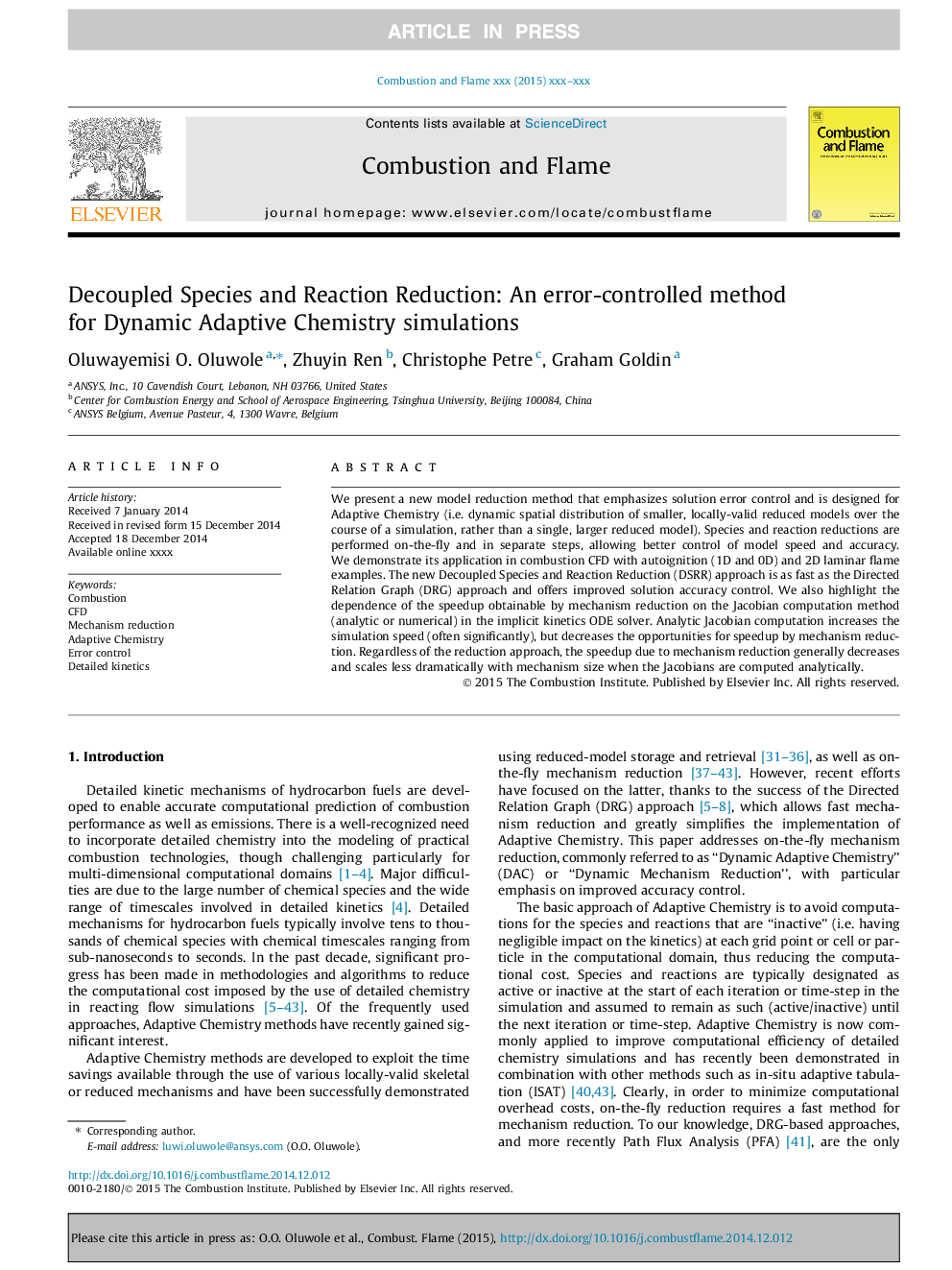| Article ID | Journal | Published Year | Pages | File Type |
|---|---|---|---|---|
| 10264296 | Combustion and Flame | 2015 | 10 Pages |
Abstract
We present a new model reduction method that emphasizes solution error control and is designed for Adaptive Chemistry (i.e. dynamic spatial distribution of smaller, locally-valid reduced models over the course of a simulation, rather than a single, larger reduced model). Species and reaction reductions are performed on-the-fly and in separate steps, allowing better control of model speed and accuracy. We demonstrate its application in combustion CFD with autoignition (1D and 0D) and 2D laminar flame examples. The new Decoupled Species and Reaction Reduction (DSRR) approach is as fast as the Directed Relation Graph (DRG) approach and offers improved solution accuracy control. We also highlight the dependence of the speedup obtainable by mechanism reduction on the Jacobian computation method (analytic or numerical) in the implicit kinetics ODE solver. Analytic Jacobian computation increases the simulation speed (often significantly), but decreases the opportunities for speedup by mechanism reduction. Regardless of the reduction approach, the speedup due to mechanism reduction generally decreases and scales less dramatically with mechanism size when the Jacobians are computed analytically.
Related Topics
Physical Sciences and Engineering
Chemical Engineering
Chemical Engineering (General)
Authors
Oluwayemisi O. Oluwole, Zhuyin Ren, Christophe Petre, Graham Goldin,
